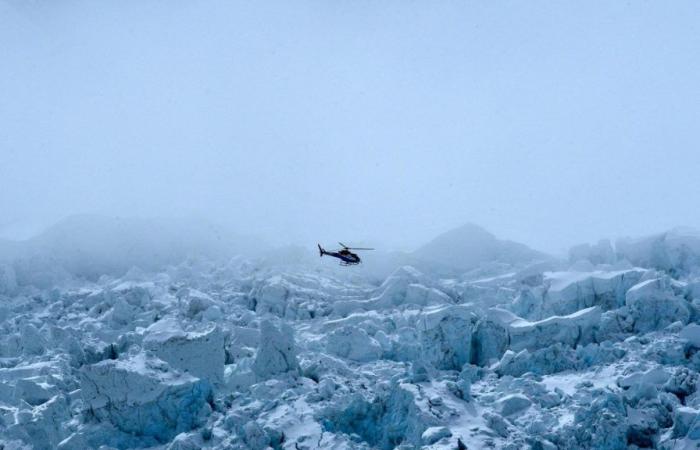On the slopes of Everest, climate change is melting layers of snow and ice, causing the bodies of hundreds of climbers who died trying to reach the roof of the world to resurface. Among those who climbed the highest peak in the Himalayas this year was a team whose goal was not to reach the 8,849-meter summit, but to recover the remains of forgotten existences. Among many risks, the team has already recovered five frozen bodies, then brought back to Kathmandu, the Nepalese capital. Two have been pre-identified pending “detailed testing” to confirm their identity, according to Rakesh Gurung of Nepal’s tourism ministry.
Mount Everest: How Nepal Will Take Away Corpses and Rubbish from the Summit
UGO LEO
09 April 2024
Global warming causes corpses to resurface
This Nepalese campaign between Everest and the nearby peaks Lhotse and Nuptse is difficult and dangerous. «Due to the effects of global warming, bodies and waste become increasingly visible as snow cover decreases“, says Aditya Karki, a Nepalese army major who leads a team of 12 soldiers and 18 climbers. More than 300 people have died on the summit since expeditions began in the 1920sof which eight in the last season alone. Many bodies remained behind, some hidden by snow or in deep crevasses. Others, still dressed in their colorful climbing gear, became summit landmarks for climbers, earning nicknames like “Green Boots” or “Sleeping Beauty.”
Ex-Soldier Without Legs Climbs Everest: This Is How I Did It
The Death Zone
Many bodies have been found in the so-called “death zone”dove low oxygen levels increase the risk of acute mountain sickness and ultimately become fatal over a certain durationIt took 11 hours to free one of the bodies stuck in the ice up to the torsoand to free it with hot water and extract it with an axe. “It is extremely difficult,” insists Tshiring Jangbu Sherpa, who led the expedition. According to the guide, some bodies are still almost as they were at the time of death, dressed in full equipment, with crampons and harness.
REPORTAGE FROM ABROAD
“Everest is not a landfill, Sherpa says”
by Fabio Pozzo
13 Maggio 2023
The recovery of bodies at high altitude
High altitude rescue remains a controversial topic in the climbing community. It is an undertaking that costs thousands of dollars and requires up to eight rescuers for each body.. At high altitudes it is difficult to carry heavy loads, but a corpse can weigh more than 100 kilos. For Aditya Karki, however, this effort is necessary. «We need to bring them back as much as possible», dice, «if we continue to leave them behind, our mountains will turn into cemeteries”. During missions, bodies are often wrapped in a sack and then transported by sled. A body found near the summit of Lhotse, the fourth highest in the world at 8,516 meters, was one of the most difficult to descend, says Tshiring Jangbu Sherpa. “The body was frozen, the hands and legs were open.” “We had to carry it as is to Camp 3, and only then was it possible to transfer it to a sled.”
The climber’s test of strength on Everest must climb over hundreds of people to survive
While the body of George Mallory, a British mountaineer who disappeared in 1924, was finally found in 1999, that of his climbing partner, Andrew Irvine, was never found. Nor was their camera, which could provide evidence of a successful climb that could potentially rewrite the history of mountaineering. The entire campaign, with a budget of over 600,000 dollars, mobilized 171 Nepalese guides and porters to bring back 11 tons of waste. Fluorescent tents, disused climbing equipment, empty gas cylinders clutter the road to the summit. “The mountains have given us so many opportunities,” observes Tshiring Jangbu Sherpa, “we must give them back.”






